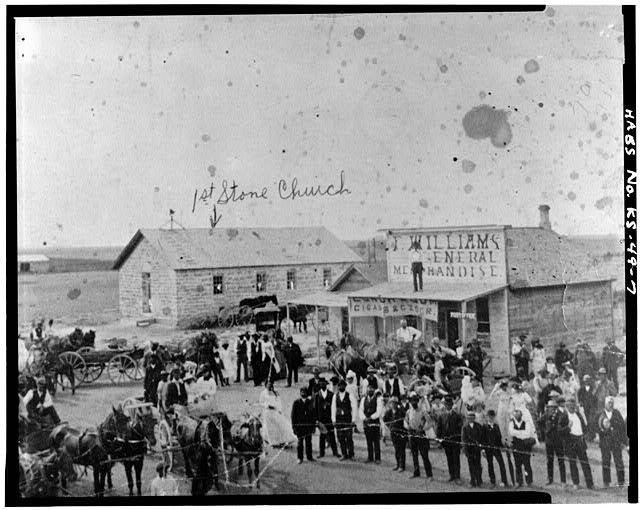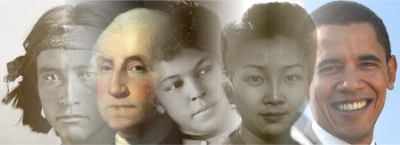
Library of Congress,
HABS KANS,33-NICO,1-7 |
African American immigrants to the west founded towns and settlements throughout the West. One of the most famous is Nicodemus, Kansas.
Kansas had been known as "Bloody Kansas" before the war and after the war it became a destination for many African American pioneers. In 1879 and 1880, largely through the urging of Benjamin 'Pap' Singleton over 15,000 African Americans, called Exodusters, fled the post-Reconstruction south to find freedom and opportunity in Kansas.
Nicodemus was founded before the Exodister movement, in 1877, by
W. H. Smith, who later became president of the Colony.
By 1886 the town had population of 200, a bank, general stores, hotels, pharmacies, hat makers, barber shops and blacksmiths among its many businesses. This photograph of Washington Street, Nicodemus, is thought to have been taken around 1885. |

